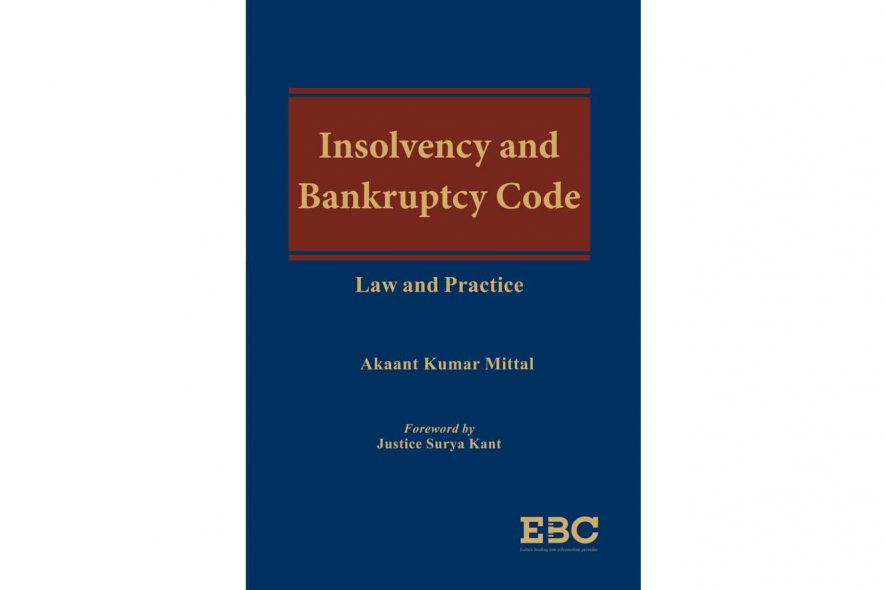An event was organised on 12th December at noon to launch the commentary on Insolvency and Bankruptcy: Law and Practice by Mr Akaant Kumar Mittal. The book is foreworded by Justice Suryakant, Judge, Supreme Court of India, with messages from Dr MS Sahoo, Chairperson Insolvency and Bankruptcy Board of India and Prof. (Dr.) Ranbir Singh, Former Vice-Chancellor of National Law University, Delhi.
The launch of the book took place online and had several prominent people in attendance such as Justice AB Singh, Judicial Member, NCLAT, Dr MS Sahoo, President of Insolvency and Bankruptcy Board of India, Ms Mamta Binani, ex-Chairman, ICSI and others. The book launch was followed by a panel discussion on “4 Years of IBC – The Revolution Witnessed and the Promise for Future”. This discussion was moderated by Ms Haripriya Padmanabhan, Advocate, Supreme Court of India.
About the Book
Insolvency and Bankruptcy Code: Law and Practice by Akaant Kumar Mittal is a practitioner’s guide on the jurisprudence that has developed on the Insolvency and Bankruptcy Code, 2016 so far. The commentary deals with both corporate insolvency and individual-related insolvency and bankruptcy. It discusses the procedure stipulated under the IB Code along with the relevant Rules and Regulations framed by the Government and the Insolvency and Bankruptcy Board of India. The book touches upon the issues of cross-border insolvency and group insolvency. It covers almost all the decisions of the Supreme Court and National Company Law Appellate Tribunal along with rulings from different High Courts and National Company Law Tribunal Benches.
The commentary discusses the interplay of the IB Code with different statutes such as arbitration law, SEBI, money laundering, etc.
Reviews
In India’s otherwise infamous regulatory quagmire, the IBC stands out as a cohesive piece of legislation. The author documents this evolution of our nascent insolvency framework through detailed appreciation of judicial decisions, and like an erudite academician, he subtly hints at future trends. Such a contrast in focus between the past and the future, progressiveness, and reflexivity, makes this commentary a must-read both for professionals seeking to transition from the old regime to the new, as well as for fresh entrants to the field of insolvency.
–Justice Surya Kant
Judge, Supreme Court of India
I find that this publication “Insolvency and Bankruptcy Code: Law and Practice” by Shri Akaant Kumar Mittal is an exemplary initiative in this direction. I am sure, this will prove to be a great resource for practitioners, policymakers, researchers and academics to understand in detail the change that is in the offing. I am certain that this will motivate more inquisitive minds to delve deeper into various aspects of the Code from an interdisciplinary perspective, enriching the Indian literature on bankruptcy and insolvency in the days ahead. It will also build institutional capacity in the economy to implement and contribute to the insolvency and bankruptcy reforms in the country in letter and spirit.
—Dr M.S. Sahoo
Chairperson, Insolvency and Bankruptcy Board of India
The author, Akaant Mittal has through this book, made a conscious attempt to make every reader aware of the rules and regulations of the existing insolvency laws in India. I am sure, this “Handbook” will be a useful addition to the Insolvency & Bankruptcy Law in India and will help every reader in having an in-depth knowledge of the existing insolvency regime. It is a very useful and well-thought material for both practitioners and students. I wish this venture za great success.
—Prof. (Dr) Ranbir Singh
Vice-Chancellor, National Law University, Delhi






